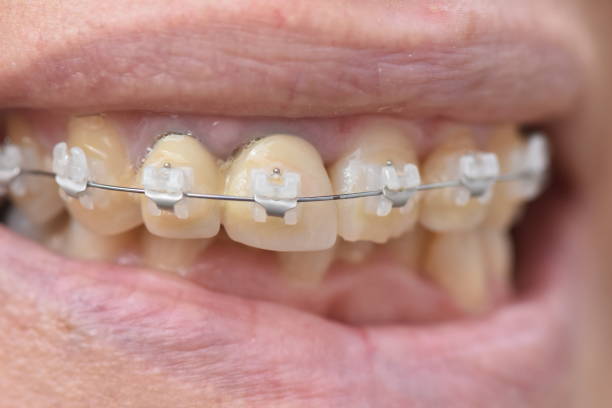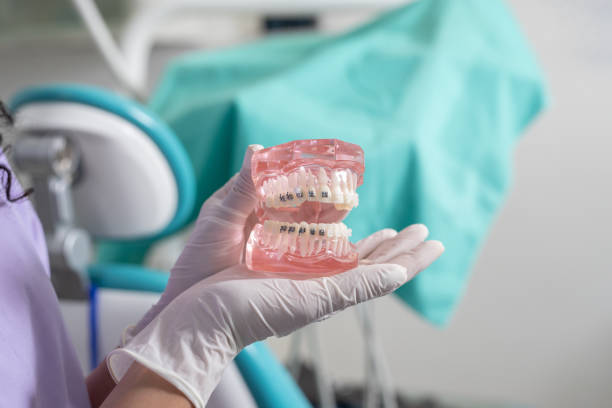Ceramic Braces



What are ceramic braces?
Adults like ceramic braces. This is due to their usage of transparent material. less noticeable. Some have tooth-colored wires, which adds to their allure.
Advantages: They are less noticeable than metal braces and shift teeth more quickly than transparent plastic aligners (Invisalign). They are more effective than transparent aligners at moving teeth (Invisalign). Ceramic braces will correct your teeth in roughly 18 to 36 months. Even if your teeth don’t need much correction, popular clear-alignment treatments like Invisalign might take a year or more to function. Furthermore, clear-alignment procedures are ineffective in situations of extreme misalignment or malocclusion (a crooked bite). You can select your own colors. Metal braces are only available in one color: gray (or, if available, bright metallic silver). Ceramic braces come in almost every color conceivable. They are not disruptive to imaging tests. Metal braces can interfere with imaging examinations. Ceramic braces cause significantly less signal interference.
Cons: The downside is that they are more costly than metal braces. Metal braces are more pricey. Ceramic braces are often $1,000 to $2,000 more expensive than metal braces. They could make your gums sensitive. Ceramic brackets are bigger than metal brackets. Metal brackets. This can make cleaning around your brackets more difficult, which can lead to swelling or receding gums if your toothbrush does not reach the enamel and gumline. They’re not as strong as metal. Ceramic braces are more expensive. more than twice more likely to fracture or break off. Debonding (the process of removing the adhesive) has also been linked to tooth surface damage (enamel). They are slower than metal in moving teeth. Because they are more delicate, needing to replace damaged brackets or make gradual modifications at each session may cause the straightening process to be delayed. They could stain. The elastic ties that secure the wire to the brackets are readily discolored and will remain stained until replaced.

